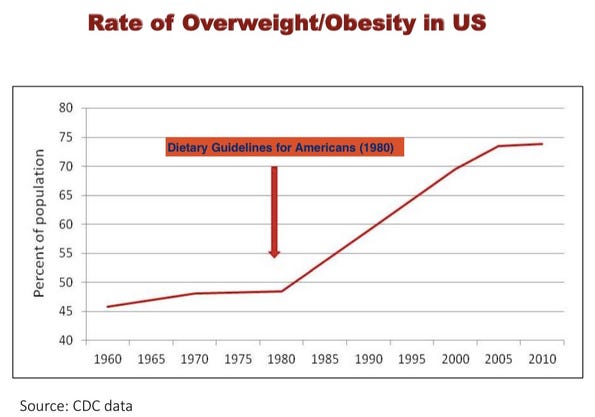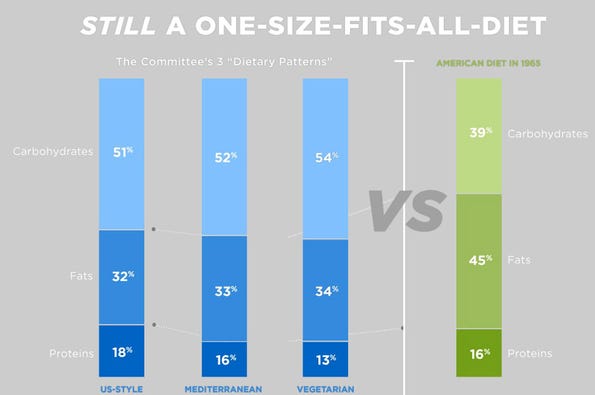Data show Americans have followed the government's dietary guidelines -- and gotten fat as a result.
April 14, 2016

Members of the Nutrition Coalition said Americans followed the government dietary guidelines at the same time obesity burgeoned.
This flies in the face of conventional wisdom, in which doctors and nutritionists tell people they are obese entirely because they eat the wrong foods and don't exercise.
The Nutrition Coalition is a group of dietary researchers and others who emphasize results from years of scientific evidence about nutrition's relationship to human health rather than clinging to and re-mouthing the failed hypotheses of the past.
The group hosted a press conference last week to precede the National Food Policy Conference on April 6-7, a key annual event for policy makers in Washington, D.C. The impetus was an invitation, followed by dis-invitation, to Nutrition Coalition member and author Nina Teicholz to speak at the conference about these contested issues.
Data presented by the group followed the discourse of Teicholz's best-selling book, "The Big Fat Surprise," explaining that animal products, and fat in particular, was demonized by early nutritionists and then by the U.S. government without any scientific data, using only scientific hypothesis. Since that time, the government has stayed the course it laid out, and much of the funding it has passed out for nutritional research has purchased more of the same faulty deductions.
Americans' waistlines and related health appear to have been the victims of these ideas, now disproven by large epidemiological studies and by real-world experience with varying dietary regimes.
Researchers spoke during the press conference about how their own results working with real people run counter to the official narratives.
One graph supplied by the Nutrition Coalition's members showed when the government's dietary recommendations became official in the late 1970s, the obesity epidemic of the American people began and accelerated.

Other data showed the public has followed the dietary guidelines, despite claims to the contrary. This means Americans have cut their consumption of saturated fats and increased their consumption of carbohydrates. In that vein, one of the speakers reminded the audience there are only three basic food types or groups:
Fats
Carbohydrates
Protein
When you cut back in one area, you will necessarily increase consumption in one or both of the others.

The graphs show the U.S. population increased consumption of vegetables, fruits and vegetable oils. They cut back on red meat, butter, eggs, whole milk and other animal fats. As everyone in the beef industry knows, "lean" is queen in the public eye nowadays when consumers are shopping for proteins.
Total meat consumption, not surprisingly then, has increased somewhat, but much less than carbohydrate consumption. Remember the balancing act between the three food groups. Of course, poultry was the winner in this race, likely because of low cost as well as admonitions against eating red meat, which of course ties back to the higher levels of saturated fat in red meat and the bugaboo that saturated fat caused heart disease.
It's also worth noting that since the late 1990s and early 2000s, the public has cut back on consumption of refined grains and sugars significantly, while increasing consumption of whole grains somewhat. These, too, have been in line with "official" recommendations.
Last, the Nutrition Coalition charged that, despite all the evidence against it, the official narrative has not changed since it began. The dietary committee today names three "dietary patterns," yet all are essentially the same -- low-fat, high-carbohydrate diets.

At the least, the group said, dietary guidelines should make room for the large number of people with blood-sugar and/or diabetic issues to consume low-carbohydrate diets and it should name them as a healthy option.
You might also enjoy:
Be aware of rabies' warning signs in cattle
11 must-read profitability tips from Burke Teichert
Gallery: Get to know the 2016 Seedstock 100 operations
3 key production areas that contribute to ranch-level sustainability
You May Also Like



